Do you want to know what car detailing is and how to do it yourself? Here you will get to know about car detailing tips. Proper car detailing can make your car look as good as new. It is a process that includes cleaning, polishing, and protecting the interior and exterior of a car. You can do it yourself with some basic supplies, or have a professional do it for you. Here’s how to get started!
Auto Detailing Tips: What Do You Need for Car Detailing?
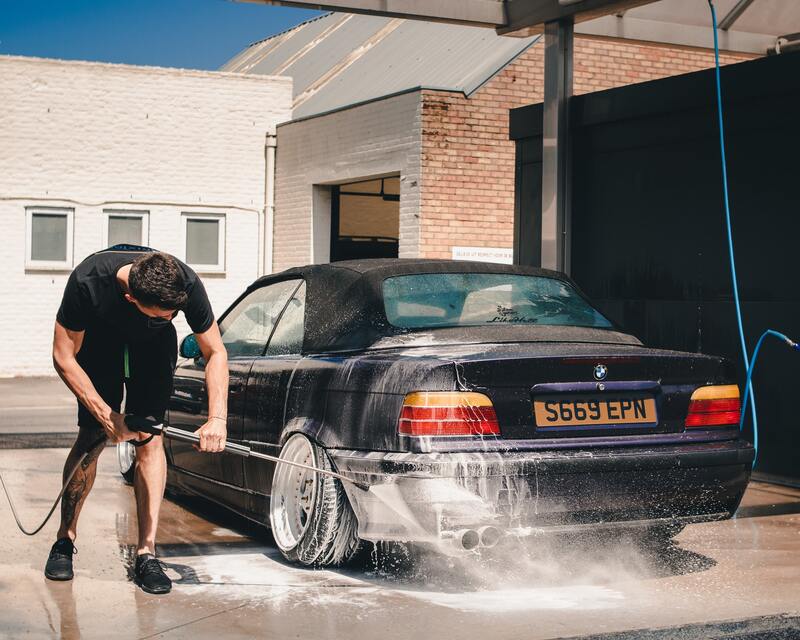
1. Bucket
Fill one bucket with soapy water and another bucket with plain water. Dunk the wash mitt in the bucket with soapy water and start cleaning the car from top to bottom. Rinse the wash mitt in the bucket with plain water before dunking it again in the soap solution.
2. Soap
Liquid soap is often used in car detailing because it can help remove dirt and grime from the exterior of a vehicle. When using soap to clean your car, it is important to use a product that is designed for use in cars. This will help ensure that the soap does not damage the paint or finish on your car.
3. Wash Mitts
Wash mitts are commonly used in car detailing to help wash the car and remove dirt and grime. They usually have a soft, absorbent material on one side and a scrubbing material on the other. Wash mitts can be made from a variety of materials, such as microfiber, cotton, or sponge. When using a wash mitt, make sure that the vehicle is wet before starting to wash it to avoid any possible scratches.
4. Wheel Cleaner
Wheel cleaners are used to clean the wheels of a car. They can be used to remove brake dust, grime, and other dirt and debris from the wheels.
5. Glass Cleaner
Glass cleaner is important for car detailing because it helps to clean the windows and windshields of a car. Glass cleaner can also be used to clean other parts of the car, such as the dashboard and upholstery. When using a glass cleaner, it is important to follow the manufacturer’s instructions carefully so that you do not damage the car’s finish.
6. Car Wax
The use of car wax can be extremely helpful in the process of detailing a car. Car wax can help create a protective barrier between the paint and the environment, which can help to prevent damage from elements such as rain, sunray, and dirt. Additionally, car wax can help make the paintwork on a car appear shiny like new.
7. Clay Bar
A clay bar is a popular detailing tool used to remove bonded surface contaminants from the paintwork of a car. It can be used to remove things like tree sap, overspray, and water spots.
8. Leather Cleaner
Leather cleaner is a great choice for car detailing because it can help clean and protect leather surfaces. When used correctly, a leather cleaner can help extend the life of your car’s leather upholstery by keeping it clean and conditioned. A leather cleaner can also be used on other interior surfaces of your car, such as plastic and vinyl.
9. Vacuum
A vacuum can be used for cleaning the interior of a car as well as for removing dirt and debris from the exterior. It can also be used to suck up liquid spills, making it an essential tool for keeping a car clean. A vacuum can also be used to help remove pet hair from upholstery and foot mats.
10. Brushes
Brushes are considered another important tool in car care and detailing. They help to loosen and remove dirt, grime, and debris from all sorts of surfaces on your vehicle. In addition, brushes can also be used to apply polishes, waxes, and other protectants.
Now you know the important tools that you can use for car detailing. Let’s discuss in the next section how you can use these tools and do car interior detailing like a pro.
Read Also: 6 Different Types of Car Lights and When to Use Them
How to Detail a Car Interior Like a Pro
Take care while detailing the interior parts of the car. Check the detailed information to clean the all necessary parts.
1. Start From The Steering
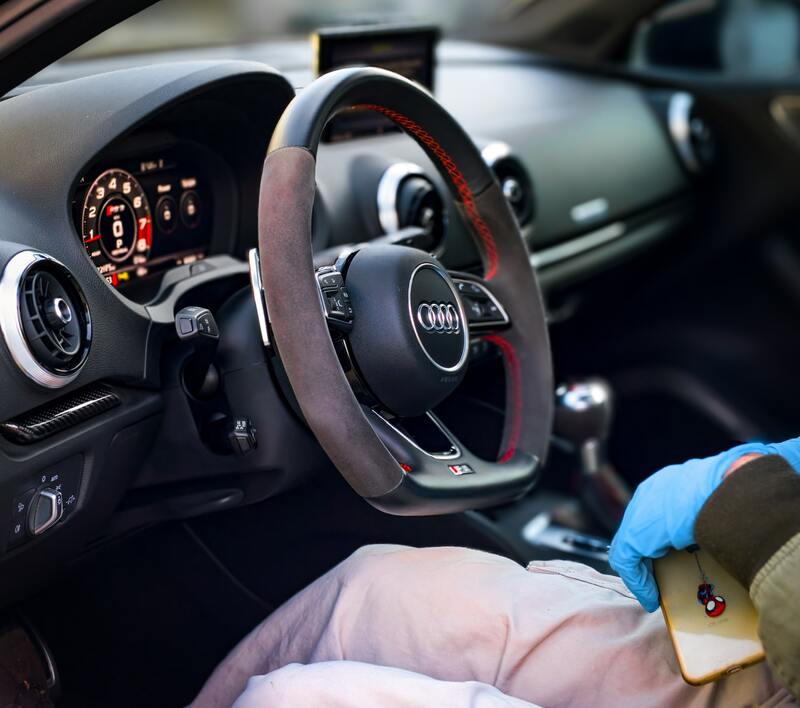
To clean your car steering wheel, mix a solution of soap and water. Use a soft cloth to scrub the surface of the steering wheel, paying special attention to areas that are stained or greasy. Rinse the steering wheel with clean water and dry it with a towel. You can also use a mild all-purpose cleaner if your steering wheel is especially dirty.
2. Clean All Interior Parts
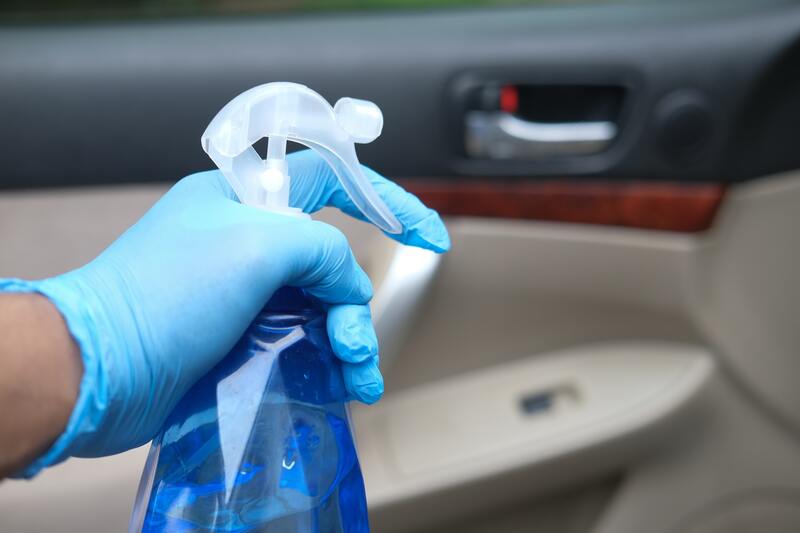
First, remove all the trash and vacuum the floors and seats. Next, wipe down all the surfaces with a damp cloth. Finally, use a cleaner specifically designed for car interiors to clean any remaining dirt or stains.
READ ALSO: How to Remove Scratches from Plastic Car Interior – A Complete Guide
3. Vacuum The Carpet
Remove all objects from the carpet, including floor mats. Vacuum the entire carpet, working in small sections and using back-and-forth strokes. Use the crevice tool to vacuum along the edges of the carpets and seats. If there are any stubborn stains, treat them with a carpet cleaner before vacuuming again.
4. Wash Your Floor Mats
Car floor mats can be difficult to clean, but it is important to keep them clean to prevent dirt and grime from damaging the car’s interior. The best way to wash floor mats is to remove them from the car and scrub them with a brush and soapy water. Rinse the floor mats and air-dry them before putting them back in the car.
5. Scrub Your Carpet
Once you are done vacuuming the carpets to remove any dirt and debris, mix a solution of water and mild dish soap. Using a clean sponge, scrub the carpets with the soap mixture. Rinse the sponge in clean water to avoid re-depositing dirt on the carpet. Finally, allow the carpets to air dry completely before using your car again.
6. Clean The Seat Leather
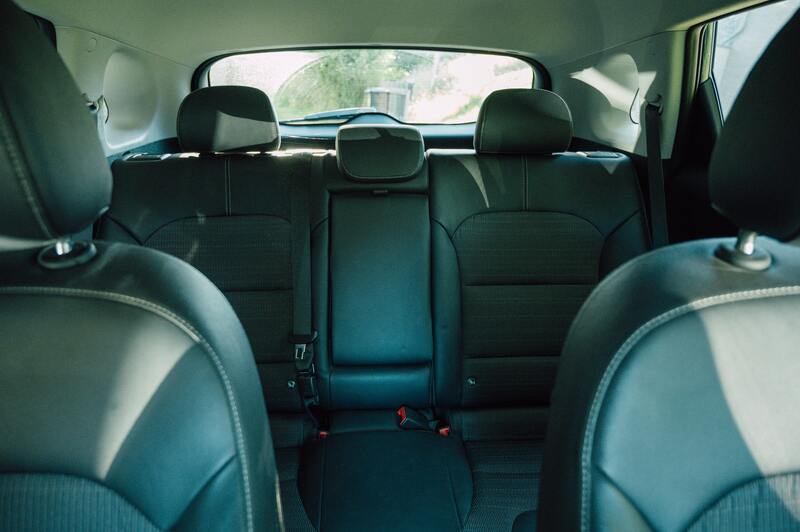
For car seat cleaning, wipe the seat with a damp cloth to remove any dirt or debris. Apply a leather cleaner to a clean, dry cloth and rub it into the seat. Wipe off any excess cleaner with a damp cloth. Repeat this process as needed to maintain the cleanliness of your car’s leather seats.
7. Polish The Finish
Purchase a polishing compound and a buffing pad. Also, make sure that you have a clean, dry cloth to remove any excess polish. Start by applying the polishing compound to the buffing pad. Then, using circular motions, buff the polish to the car’s finish. Finally, use the cloth to remove any excess polish and enjoy your car’s shiny new finish!
8. Brush Out the Air Vents
If you don’t clean the air vents in your car regularly, they can start to impact the quality of the air you’re breathing. To clean the air vents, use a brush to loosen any dirt or debris that’s built up in the vents. Then, use a vacuum with a narrow attachment to suck up the dirt and debris. Finally, use a microfiber cloth to wipe down the vents and remove any lingering dirt or debris.
9. Fix Tears in Leather Seats
If your leather car seat has a tear, it can easily be fixed with super glue. Just apply a small amount of glue to the tears, and then hold the pieces of leather together until the glue dries. You may need to apply a few coats of glue to get a strong bond. Once the repair is complete, your seat will look as good as new.
10. Glass Cleaning
For a quick and easy glass cleaning solution, mix one-part vinegar with ten parts water. Spray the solution onto your car’s glass and wipe it clean with a microfiber cloth. To clean tougher stains, use a stronger solution of vinegar and water, or use a commercial glass cleaner. Use a lint-free cloth to clean the inside of your car’s window to avoid streaks.
11. Perfuming
Once you are done cleaning your car completely, mist the car with a light fragrance. For a more pronounced scent, place a diffuser in the car or apply a fragrance to the seats. Enjoy your freshly perfumed car!
Now you know how to detail your car interior like a pro. However, you need to know a complete guide on inside-out car washing so that you can detail your own car. So, here’s a DIY guide for you on car exterior cleaning:
Read Also: The Pros and Cons of Automatic and Manual Cars
How to Do Exterior Cleaning
Follow the methods of washing and cleaning the car without affecting the car paint.
1. Pre-rinse the car
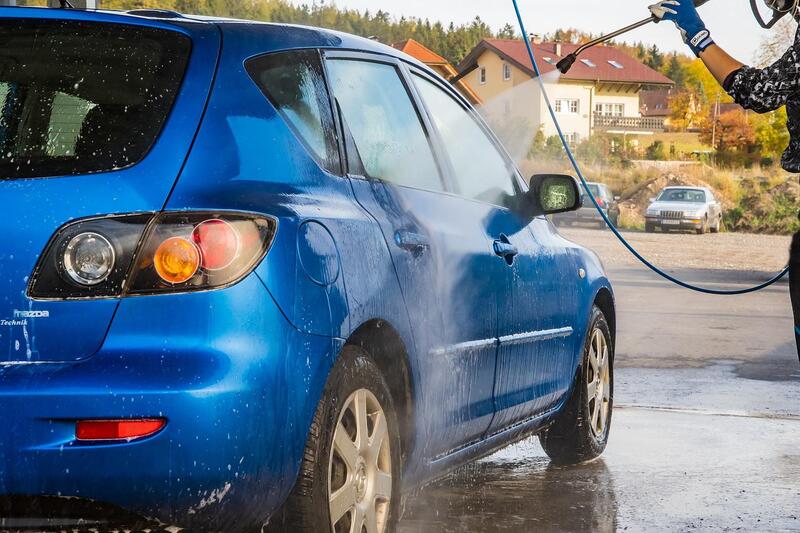
Wet the car down with a hose, starting from the top and working your way down. Rinse until all the suds are gone and the water runs clear. Dry the car off with a clean towel.
2. Wash the wheels
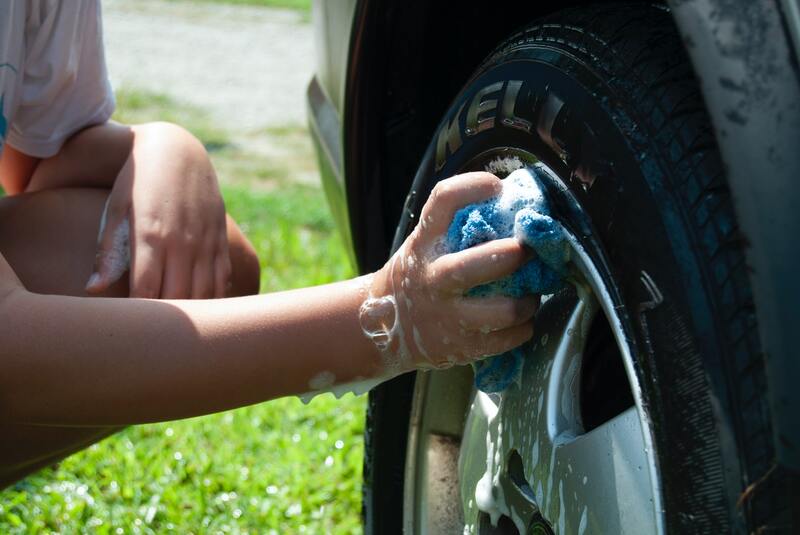
To get your car’s wheels squeaky clean you’ll need a bucket of warm water, soap, a sponge, and a brush. First, wet the wheels with the hose. Then, mix up some soapy water in the bucket and scrub the wheels with the sponge. Rinse off the soap, and use the brush to remove any stubborn dirt. Finally, dry the wheels with a towel. That’s it! Now you can enjoy your clean wheels.
3. Car Washing
You’ll need water, soap, and a sponge. First, wet your car down. Then, apply the soap evenly. Use the sponge to scrub the soap into the paint. Finally, rinse off the soap with clean water.
4. Surface Claying
Clay can be used to clean the surface of your car by removing impurities and build-up. Buy a clay bar kit that includes a clay bar and a lubricant. Spray the lubricant onto the surface of your car. Then rub the clay bar over the lubricated area in a back-and-forth motion. Keep doing this until the entire surface has been cleaned. Wipe away any residual clay with a clean microfiber cloth. If done properly, surface claying will leave your car’s paint looking smooth and shiny.
5. Rubbing & Polishing
For the best results, wash and dry your car before you start. Use a rubbing compound to remove any stubborn marks or stains. apply the polishing compound with a soft cloth in a circular motion. Add more pressure for tougher marks. Finally, use wax or sealant to protect the paintwork.
6. Headlights & Taillights
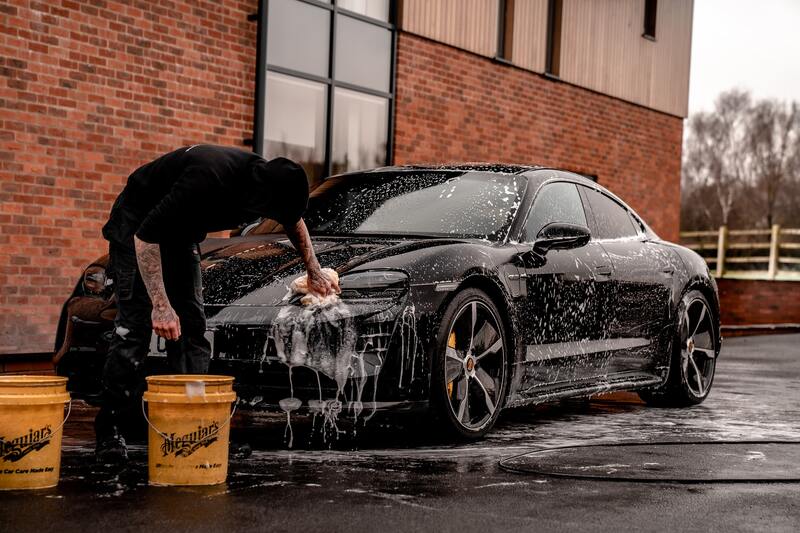
To clean your car’s headlights and taillights, start by washing the outside of the lens with soapy water. Then, scrub the lens gently with a toothbrush. Do it gently to avoid any scratches. Rinse the lens with clean water, and dry it with a soft cloth. Apply a headlight restoration kit to the lens to help restore its clarity.
7. Dry the Car

After you’ve finished washing your car, it’s important to dry it off properly to prevent water spots from forming. Take a chamois or microfiber cloth. Start by wiping down the surfaces of the car, then move on to the windows and glass. Finally, dry any remaining water with a clean towel.
8. Use your Clay Bar
Clay bars should be used after washing and before waxing or polishing. To use a clay bar, first, mist the surface with a detail spray. Then, gently rub the clay bar over the surface in a back-and-forth motion. Once all contaminants have been removed, buff the area with a clean microfiber towel.
9. Wax the Car
Once you are done washing and drying the car, apply a thin layer of wax to the car’s surface. Rub the wax in a circular motion until it is evenly distributed. Allow the wax to dry for 30 minutes before buffing it off with a clean cloth. Regular car waxing help protect the car’s paint job and keeps it looking shiny and new.
Read Also: 7 Reasons Why Your Car Won’t Start After Getting Gas
How to Do Engine Bay Cleaning
When it comes to detailing a car inside out, the discussion cannot be completed without mentioning how to do engine bay cleaning. Here are a few tips:
Check all the small parts of the engine and clean them by using a piece of cloth and remove the dust from it.
1. Check unwanted Leak
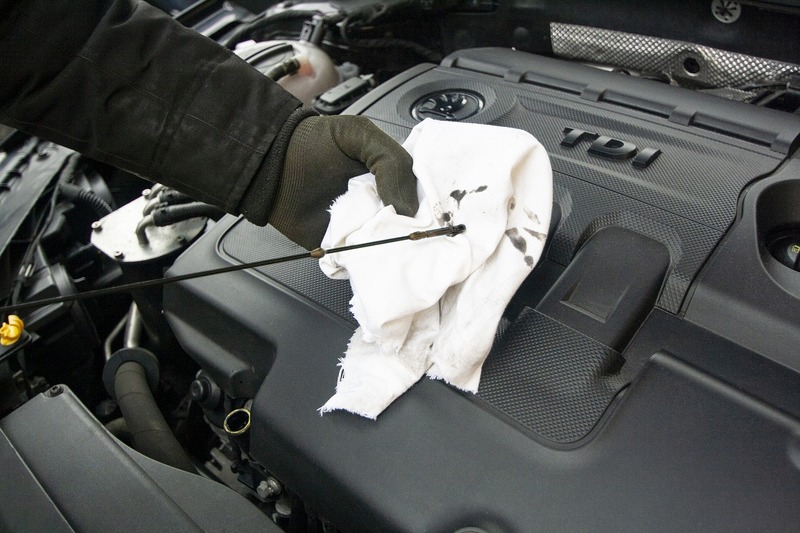
First, open the car’s hood and check the engine for any leaks. If there are any leaks, clean them up with a rag or sponge. Next, use a hose to rinse off the engine bay. Make sure to remove all the dirt and grime. Finally, dry off the engine bay with a clean cloth. Now your car’s engine bay is clean and free of unwanted leaks!
2. Clean the parts carefully
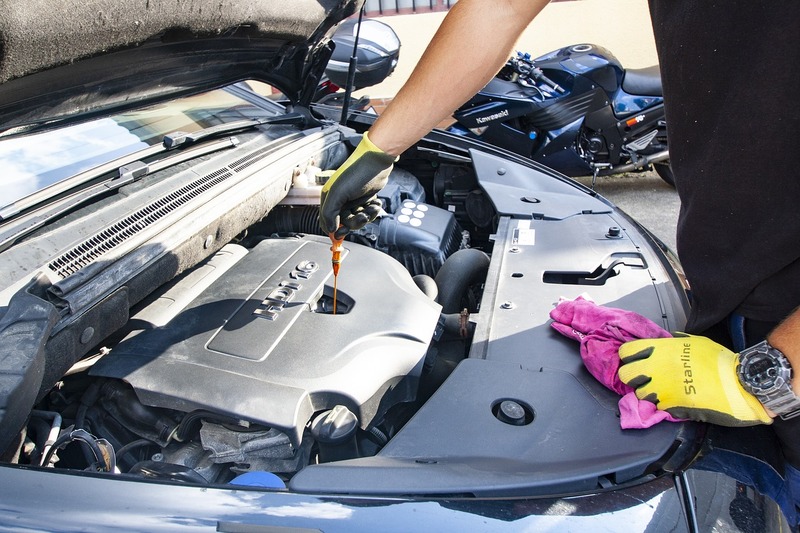
When you’re cleaning the parts of your car engine, be careful not to damage any of the delicate components. If you’re not careful, you could end up making a big mess that’s tough to clean up.
I hope, now you have got a complete guide on how to detail your own car easily. Do you know what benefits you can get doing this? Know here:
Benefits of Car Detailing
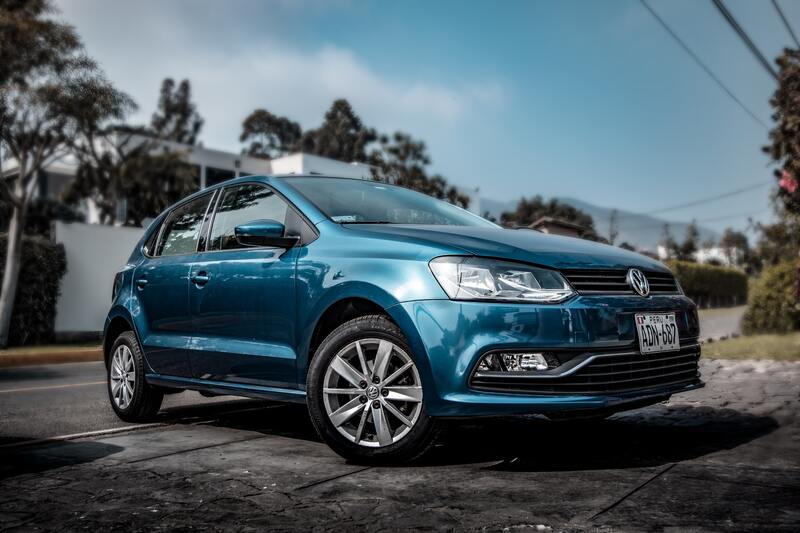
1. Extend Life Span
Car detailing is involved cleaning and polishing the interior and exterior of a car. This helps protect the car’s paint and finish, and can also help extend its lifespan. Regular car detailing can also help keep the car’s value high, as it will look newer for longer. When done properly, car detailing is an effective way to protect your investment and keep your car looking its best.
2. Lesser Maintenance
Car detailing is a process that cleans, polishes and protects all the different parts of a car. It can help minimize the need for future maintenance by protecting the paintwork, windows, wheels, and other parts of a car from dirt, scratches, and other damage. As a result, car owners can enjoy their vehicles for longer with less time and money spent on keeping them in good condition. Detailing is, therefore, an important part of owning a car.
3. Offers Protection
Car detailing offers protection of a car by cleaning it and removing all the dirt, grime, and debris that can build up over time. This helps keep the paint and finish looking new. Your car stays protected from rust and other damage that can occur when dirt and debris are left on the surface. In addition, car detailing can also help improve the resale value of a car by making it look its best.
Wait! The discussion on detailing a car perfectly is not over.
Read Also: Troubleshooting Car AC: Why It’s Blowing Hot Air & Emitting Bad Smell
What to Avoid While Detailing a Car
To detail your car perfectly by yourself, you need to avoid doing the below-mentioned things:
1. Avoid washing your car in the sunlight
Washing your car in sunlight can cause water spots because the water evaporates quickly. It’s better to wash your car in the shade.
2. Using Wrong Cleaning Detergent
If you’ve ever washed your car with the wrong kind of soap, you know how frustrating it can be. Not only does it not work as well as you’d like, but it can also leave streaks and spots on your paint. Plus, it’s just a waste of time and money. So next time you’re at the store, be sure to pick up a car-specific soap that won’t damage your paint. Your car will thank you for it!
3. Leaving Hard Water On Car Paint
Hard water can damage your car’s paint, so it’s best to avoid using it when washing your car. The minerals in hard water can build up on the paint, causing it to become dull and lifeless. If you do not take care of this, your car may face permanent damage. If you live in an area with hard water, be sure to use filtered or distilled water to wash your car. This will help keep your paint looking its best.
4. Using the Wrong Glass Cleaner
You should avoid using the wrong glass cleaner to wash your car because it can damage the paint. Glass cleaners contain harsh chemicals that can strip away the wax and protective coating on your car, leaving it vulnerable to scratches and other damage. When cleaning your car, be sure to use a glass cleaner that is specifically designed for automotive use. This will help protect your car’s finish and keep it looking its best.
5. Apply Too much wax
Applying too much wax to your car can actually do more harm than good. The excess wax can build up and make it difficult to see out of the windows, and it can also attract dirt and dust, which can scratch the paint. Plus, it’s just a waste of wax! So next time you’re giving your car a little TLC, be sure to use a light hand with the wax.
6. Overuse of chemicals
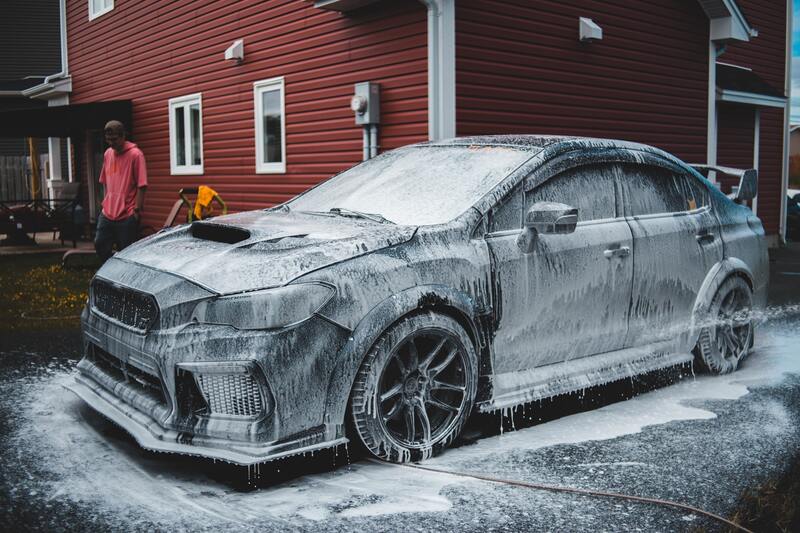
Do you want to give your car the perfect shine it deserves? If yes, to do this, do not be tempted to reach for the nearest bottle of chemicals. Overusing chemicals can actually damage your car’s finish. In addition, chemicals can be harmful to your health if you’re not careful. So next time you’re detailing your car’s interior, take it easy on the chemicals and opt for a more natural approach. Your car will thank you for it!
7. Leaving Chemical Cleaners on Interior Surfaces
If you spill something in your car, it’s important to clean it up right away. However, you should avoid leaving chemical cleaners on interior surfaces for too long. The chemicals in the cleaners can damage the finish on your car’s interior, making it more susceptible to scratches and stains. In addition, the fumes from the cleaners can be harmful to your lungs. So, next time you spill something in your car, be sure to clean it up quickly and safely.
Read Also: Car Shakes When Accelerating [Troubleshoot & How to Fix]
Final thoughts,
It takes a lot of work, various equipment, and a significant amount of time to complete a car detailing process perfectly. The above guide on car detailing can help you. Follow these tips and detail your own car like a pro. You can also take expert assistance to do the detailing process and save your time.
FAQs:
Q: How often should I detail my car?
A: The frequency of car detailing depends on various factors, including your driving habits, local weather conditions & the overall condition of your vehicle. As a general guideline, it’s recommended to detail your car every three to six months.
Q: Can I detail my car myself, or should I hire a professional?
A: Car detailing can be done both professionally and as a do-it-yourself (DIY) project. If you have the time, resources & proper knowledge, detailing your car yourself can be a rewarding experience. It allows you to have complete control over the process and save some money. However, professional car detailers have the expertise, specialized tools & access to professional-grade products, which can result in a higher-quality finish.
